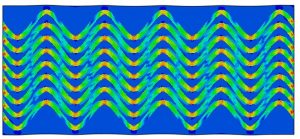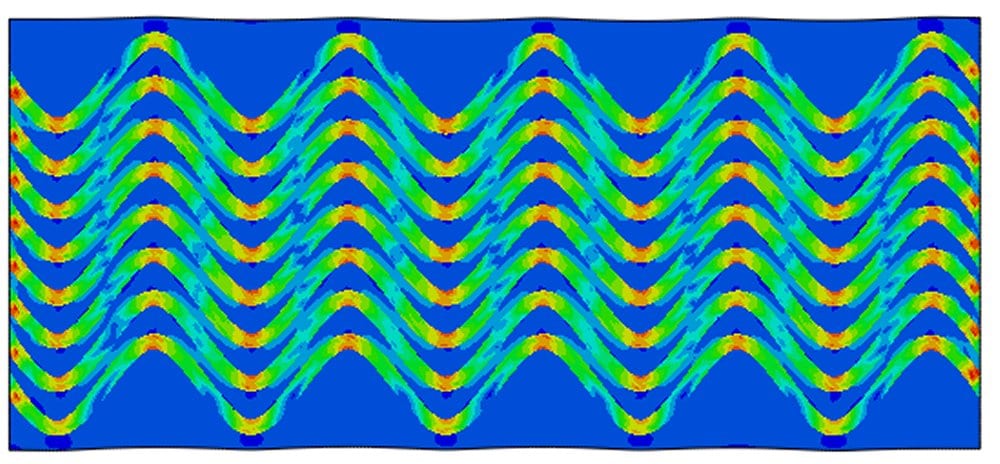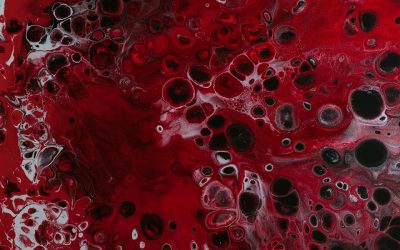In the design and selection of materials, if one wants to have a material with higher strength, typically they must sacrifice the amount of deformation the material is capable of withstanding prior to failure. However, it is often desirable to have a material that possesses both high strength and elongation; for example in energy absorption applications. Zurob and Wu use numerical computer simulations to demonstrate how this desirable combination of properties can be achieved simply by using a wavy or corrugated geometry.
Composite materials, which are combinations of two or more materials, usually consist of a stronger reinforcing phase, surrounded by a more ductile matrix phase. Most composites utilize reinforcements in the form of straight fibers, spherical particles or layers of different sheets.
In their work, Zurob and Wu demonstrate, when pulled in tension a composite with a wavy reinforcement geometry is capable of achieving comparable strength to a straight reinforcement geometry, while offering significant improvement in the amount of elongation. Aa parametric study is used to explore the effects of the height of the waves and the relative quantities of the two components in a model copper-steel system.
As the composite is pulled the corrugations unbend, and it is this unbending process that results in the improved elongation of the material. This improvement in elongation is found to increase as the height of the wave increases and offers the ability to tailor the elongation by altering the geometry of the wave.
The importance and utility of considering the geometry and arrangement of the components of a composite material in addition to the properties of the component materials is illustrated and shows how simply the design of the architecture can lead to accessing new desirable combinations of properties.

















